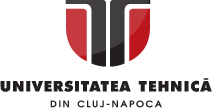Reviste și conferințe
URI permanent pentru această comunitatehttps://oasis.utcluj.app/handle/123456789/445
Navigare
27 rezultate
Rezultatele Căutării
Articol DECISION TREES-BASED ALGORITHM FOR INTELLIGENT ALLOCATION OF PROCESSES IN CLOUD(Technical University of Cluj Napoca, 2025-06-25) DOLCESCU Constantin-Valentin; BOTEZ Robert; ZINCA Daniel; DOBROTA VirgilThe paper presents a decision tree–based scheduler for intelligent cloud process allocation that evaluates features such as source area, instruction count, payload size, priority, throughput, and delay to guide real-time placement decisions. The model was trained and validated on a diverse, scenario-driven synthetic dataset covering four controlled workload conditions plus randomized fallback cases. For the training dataset, the classifier achieved 93% accuracy, while for the validation and test set, an accuracy of 92% was obtained. A Kubernetes-inspired simulation framework further visualizes and confirms the scheduler’s allocation logic under dynamic conditions. These results underscore the approach’s effectiveness, interpretability, and suitability for production-grade cloud orchestration.Articol AUDIO DENOISING USING U-NET ARCHITECTURE(Technical University of Cluj-Napoca, 2025-06-27) JIMON, L.-Daniel; VAIDA Mircea-F.Audio denoising is a pivotal task in audio signal processing. This paper presents a machine learning approach using a U-Net architecture to denoise musical audio signals affected by four distinct noise types: white noise, urban noise, reverberation, and noise cancellation artifacts. The model was evaluated on datasets derived from IRMAS and UrbanSound8K. Objective and subjective evaluation metrics were used, which show the model's effectiveness in filtering white and urban noise. However, performance on reverberation and noise cancellation artifacts is limited, indicating areas for future architectural and methodological improvements.Articol TEXTURE BASED POLARIMETRIC SYNTHETIC APERTURE RADAR IMAGE CLASSIFICATION USING COVARIANCE MATRICES(Technical University of Cluj-Napoca, 2025-06-26) ILEA Ioana; MICLEA-CECALACA Andreia Valentina; CISLARIU Mihaela; MALUTAN Raul; GROSU GeorgeThis paper proposes a workflow for polarimetric SAR (PolSAR) image classification based on statistical texture descriptors. The methodology presented in this paper involves spatial interdependence between neighboring pixels as well as multiscale texture representation using wavelet decomposition. The collected features are modeled by zero-mean Multivariate Gaussian Distributions (MGDs). Then, their estimated covariance matrix acts as the texture descriptor and is employed in a k-nearest neighbors (kNN) classifier. Experiments using real PolSAR data validate the proposed approaches' accuracy in land cover categorization, showing their potential for reliable class identification.Articol Revising Research Papers in English to Avoid Desk Rejection(Technical University of Cluj-Napoca, 2024-04-28) MUREȘAN CarmenIn the rapidly expanding landscape of academic publishing, adhering to English for Research Publication Purposes (ERPP) standards presents significant challenges for second language (L2) writers. Beyond linguistic proficiency, mastering academic discourse conventions and argumentation structures is essential. Romanian researchers, in particular, face obstacles due to linguistic and structural differences between Romanian and English. These include mastering academic style, accurately translating technical terminology, and adapting to the conventions of international scholarly writing. Limited access to high-quality language support services and the pressure to publish in high-impact journals further complicate the process. These challenges not only hinder the clarity and coherence of research papers but also increase the risk of desk rejection, preventing valuable contributions from reaching the global academic community. By analyzing the revision of approximately 200 pages of Medical Robotics research intended for international journals, this study highlights the specific obstacles encountered in manuscript preparation and the role of revision in mitigating the risk of desk rejection. Furthermore, it underscores the need for structured training programs and language support mechanisms tailored specifically for non-native researchers to improve their writing skills and overall publishing success.Articol A General Overview on the Current State of Computer-aided Translation(Technical University of Cluj-Napoca, 2024-04-28) SZASZ Maria Augusta , OLT Maria-CristinaComputer-aided translation software has been around for decades facilitating the production of accurate and consistent translations in all fields. The two major competitors in computer-assisted translation (Trados and MemoQ) have managed to ease the professionals’ work and help them produce more accurate translations. Machine translation as we know it today either if we use Google or DeepL Translate or even parallel corpora have made a quantum leap in the past years, being usable and useful in everyday context. This paper describes the types and categories of computer-aided translation technologies in use, their applicability, advantages and limitations. It will address the limitations openly and argue that the revision / post-editing process is key to producing quality translations. It will approach the features of the models based on the authors’ concrete examples. The examples contain excerpts from the translations made by the authors into/from English into/from Romanian and Hungarian.Articol The Importance of Reflection in Language Teaching(Technical University of Cluj-Napoca, 2024-04-28) RUSU Delia-Georgeta , LITERAT RuxandaReflective practice plays an important role in the professional development of language instructors, allowing them to critically assess their teaching approaches, rethink instructional strategies, and respond effectively to student needs. This article delves into the concept of reflective practice in language teaching, by examining the theoretical foundations of reflection in education, key reflective models such as Kolb's Experiential Learning Cycle and Schön's theories, and discussing strategies for language educators to maximize the benefits of reflection. It also explores the emotional aspects of reflection, emphasizing their role in teacher development and resilience. By integrating reflective practice into language teaching, educators can create more dynamic and effective learning environments while advancing their professional expertise.Articol AI in Language Learning and Teaching through the Magnifying Glass(Technical University of Cluj-Napoca, 2024-04-28) CODREANU FlorinaThe present scene of AI development is more than ever polarized by two fundamental sides: pessimistic and gloomy on the one hand, though hopeful and enthusiastic on the other hand. ELT practitioners and professionals tend to favour the latter attitude and bring the current situation to their own advantage. In the recent years AI in language teaching and learning has conquered a few areas that before seemed reserved to teachers only. The impact is considered huge and the benefits undeniable. AI progress through the magnifying glass shows the researcher many opportunities and innovations, but also plenty of risks and even more limitations. The fore article follows, both narratively and critically, the dazzling encounter between AI tools and the ample field of teaching and learning foreign languages, especially English language. The meeting is not novel at all, nor the worrisome questions arisen along. However, a closer approach may cast some fresh light on this contradictory, still evolving matter of AI technology behind the process of teaching and learning.Articol Remarks on the Legitimation Discourse of Text Generation. An Analysis of Writing Teaching Programs(Technical University of Cluj-Napoca, 2024-04-28) POLICSEK CeciliaThe current article compares a number of underlying principles that have legitimized the benefit of reading and writing within the educational framework throughout the course of time with the recent discourse on Artificial Intelligence (AI) text generation. It does so by revising several ideas that have traditionally supported the study of reading and writing and contrasts them with the perceived benefits and threats of AI, as formulated by a number of important university writing programs. This contrastive consideration of the support of reading and writing, on the one hand, and the discourse on text generation, on the other, is meant to contribute to the assessment of the degree to which the notion of text generation-centered education is compatible with education, as defined by Humanistic standards.Articol MOBILE APPLICATION FOR BLE INDOOR POSITIONING(Technical University of Cluj-Napoca, 2023-12-12) MĂLUȚAN Raul; BRISC BiancaDistance estimation in indoor localization is mainly solved by Received Signal Strength Indicator (RSSI). In our approach, the RSSI is determined empirically, and it’s used to estimate the distance between the user and beacons in a mobile app solution. Trilateration and Kalman filter help obtain better accuracy. The paper proposes a classical solution for indoor localization, but with features like blueprint implementation, Google Maps integration, and manual beacon positioning.Articol SECURITY ISSUES IN INTERNET OF THINGS BOTNETS: A HIGH INTERACTION HONEYPOT APPROACH(Technical University of Cluj-Napoca, 2023-12-11) LAZAR Alexandru; BLAGA Tudor-Mihai; ZINCA Daniel; DOBROTA VirgilFor a better awareness of the tactics employed by the malicious entities in Internet of Things, a system called Honeypot tricks the attackers into exploiting its “sweet” fake resources. While implementing nine types of devices only six of those were attacked. Despite this, the honeypot managed to capture attacks destined for three devices that were not implemented. Overall, several real-world attacks were captured and analyzed providing different indicators of compromise. No new threats were identified but the server only ran for a short period of time and with limited resources. This approach looks like a promising avenue for creating attacker profiles and collecting data on botnet behavior.
- «
- 1 (current)
- 2
- 3
- »

